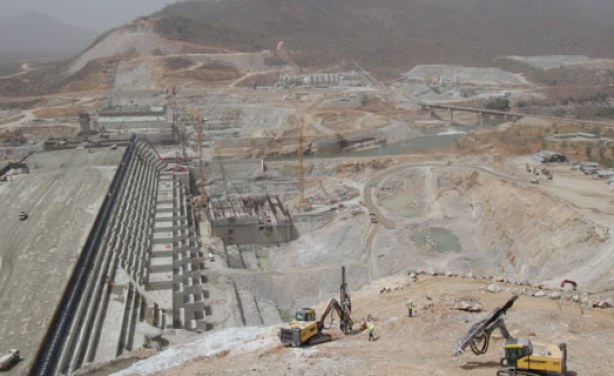A meeting that started Saturday to discuss the Grand Ethiopian Dam (GERD), has failed to approve an introductory report by a consultant company on the dam’s effects on the two downstream countries- Egypt and Sudan.
And Egypt is now raising concerns about its share of the Nile River water following the development.
“Egypt is concerned about this development that could obstruct technical studies despite Egypt’s efforts and flexibility over the past months to make sure the studies will be completed as soon as possible,” said Egypt’s Minister of Water Resources and Irrigation Mohamed Abdel-Aati.
Egypt is worried about its annual share of 55.5 billion cubic meters of the Nile River water if construction of the dam goes on to completion. The Grand Ethiopian Dam is expected to be the largest in Africa.
In March 2015, the leaders of Egypt, Ethiopia and Sudan signed an initial cooperation deal on the principles of sharing the Nile River water and the construction of the GERD, which will be Africa’s largest dam upon completion.
Experts think that if no agreement takes place between the three countries, Ethiopia’s move to begin filling the dam on the Nile would be considered a clear violation of the tripartite Declaration of Principles on Ethiopia’s Renaissance Dam signed by the leaders of the three countries.
Read:Downstream costs of the Grand Ethiopian Renaissance Dam
“Any unilateral attempt made by Ethiopia to initiate filling the dam would lead to the failure of the current technical discussions between the three countries,” said Dr. Ayman Shabana, professor of political science at the Institute of African Studies, Cairo University.
Yet it is the loss of water that worries Egypt more. An expert on the Nile basin and Sudanese affairs Hani Raslan told Arab News that almost 90 billion cubic meters of water will be drained during the filling process.
“If we take into account the annual loss of water caused by leakage and evaporation, the complete filling is expected to drain almost 90 billion cubic meters of water, not 74 billion cubic meters, which represents the final storage volume,” he said.


This was never about water shortage, but rather geopolitics to slow Sub-Sahara’s rapid economic development forcing Egypt to compete.
Egypt previously lobbied hard and blocked foreign bank loans to Ethiopia for construction of Gibe III dam, which had no connection with Nile river. Both Renaissance and Gibe dams are self-funded by Ethiopia.
It is amazing that everytime the three countries meet they don’t seem to come up with the way forward on the project.
Egyptian arabs are no fool. They know they are invaders on African land, they have been here since the year 1000, but don’t even consider themselves Africans, so they are at least vaguely aware they are invaders and foreign occupiers. The last thing they want is for a large populated Africa nation with a strong military history of repelling foreign invaders to gain an economic edge while they themselves are falling. If Ethiopia plays its cards correctly, they can pivot over and be a geo regional power
I hope they reach an agreement because the Ethiopian dam is going to be crucial for the country’s development agenda. You know Africa still struggles with energy issues
It is a amazing that everytime the three countries meet, they don’t seem to come up with a concrete decision on the way forward. And this has been the story since 2015.